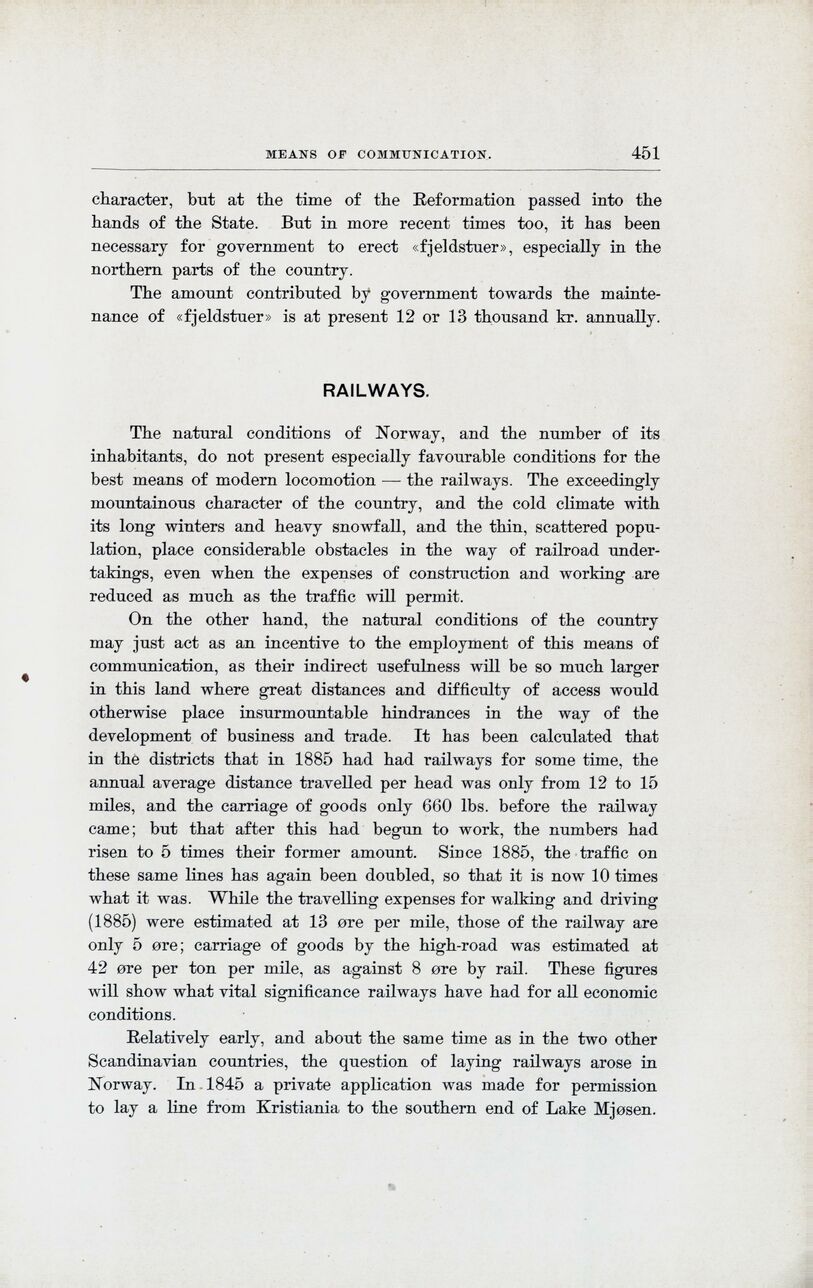
Full resolution (JPEG)
- On this page / på denna sida
- Means of Communication, by Bernh. Andersen, Andr. M. Hansen and J. T. Sommerschild

<< prev. page << föreg. sida << >> nästa sida >> next page >>
Below is the raw OCR text
from the above scanned image.
Do you see an error? Proofread the page now!
Här nedan syns maskintolkade texten från faksimilbilden ovan.
Ser du något fel? Korrekturläs sidan nu!
This page has been proofread at least once.
(diff)
(history)
Denna sida har korrekturlästs minst en gång.
(skillnad)
(historik)
character, but at the time of the Reformation passed into the
hands of the State. But in more recent times too, it has been
necessary for government to erect «fjeldstuer», especially in the
northern parts of the country.
The amount contributed by government towards the
maintenance of «fjeldstuer» is at present 12 or 13 thousand kr. annually.
RAILWAYS.
The natural conditions of Norway, and the number of its
inhabitants, do not present especially favourable conditions for the
best means of modern locomotion — the railways. The exceedingly
mountainous character of the country, and the cold climate with
its long winters and heavy snowfall, and the thin, scattered
population, place considerable obstacles in the way of railroad
undertakings, even when the expenses of construction and working are
reduced as much as the traffic will permit.
On the other hand, the natural conditions of the country
may just act as an incentive to the employment of this means of
communication, as their indirect usefulness will be so much larger
in this land where great distances and difficulty of access would
otherwise place insurmountable hindrances in the way of the
development of business and trade. It has been calculated that
in the districts that in 1885 had had railways for some time, the
annual average distance travelled per head was only from 12 to 15
miles, and the carriage of goods only 660 lbs. before the railway
came; but that after this had begun to work, the numbers had
risen to 5 times their former amount. Since 1885, the traffic on
these same lines has again been doubled, so that it is now 10 times
what it was. While the travelling expenses for walking and driving
(1885) were estimated at 13 øre per mile, those of the railway are
only 5 øre; carriage of goods by the high-road was estimated at
42 øre per ton per mile, as against 8 øre by rail. These figures
will show what vital significance railways have had for all economic
conditions.
Relatively early, and about the same time as in the two other
Scandinavian countries, the question of laying railways arose in
Norway. In 1845 a private application was made for permission
to lay a line from Kristiania to the southern end of Lake Mjøsen.
<< prev. page << föreg. sida << >> nästa sida >> next page >>
Project Runeberg, Sun Dec 10 21:09:24 2023
(aronsson)
(diff)
(history)
(download)
<< Previous
Next >>
https://runeberg.org/norparis/0465.html



